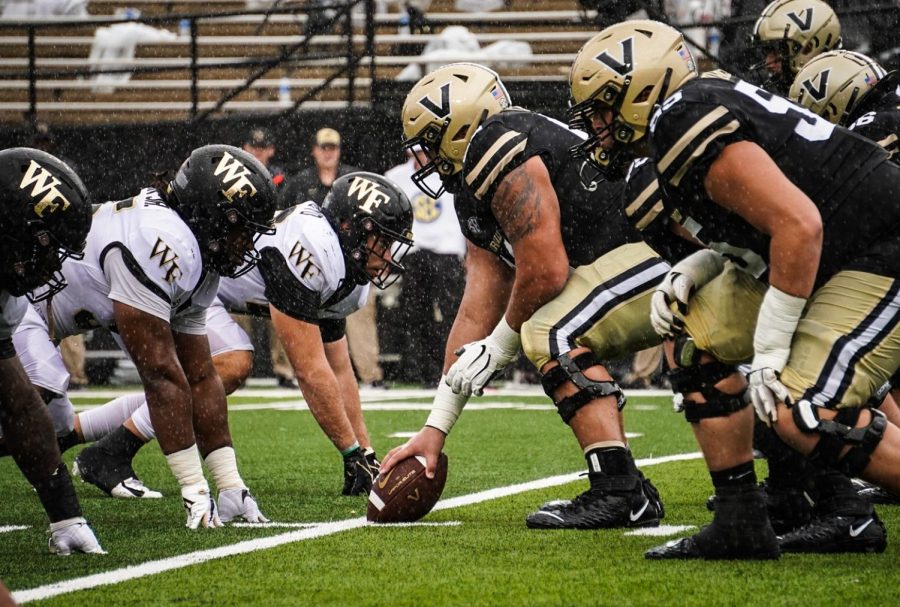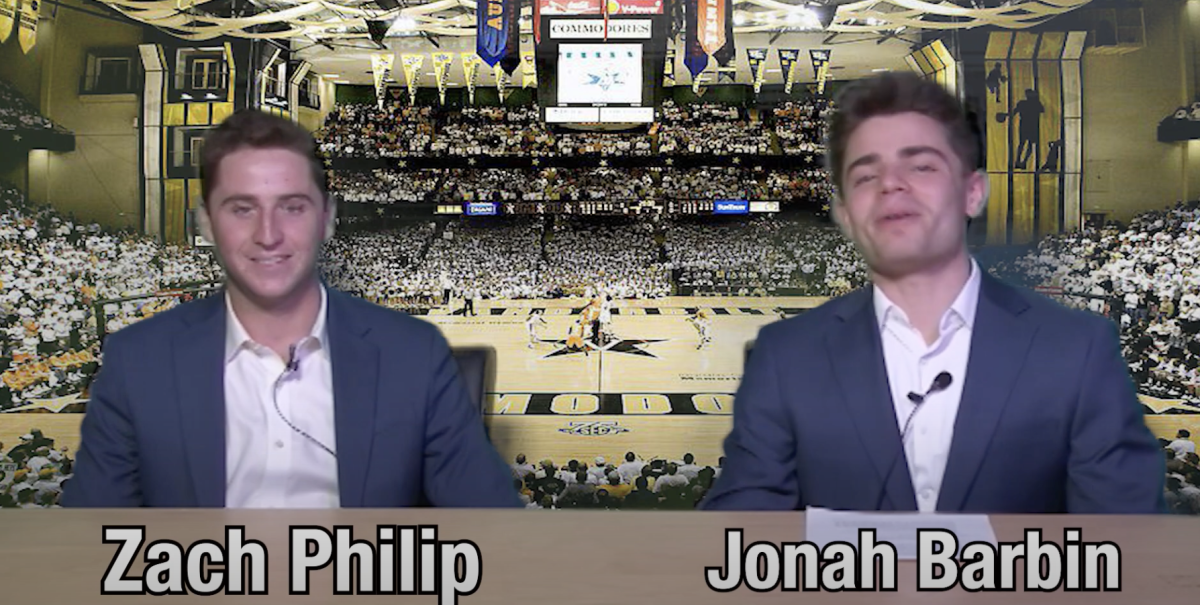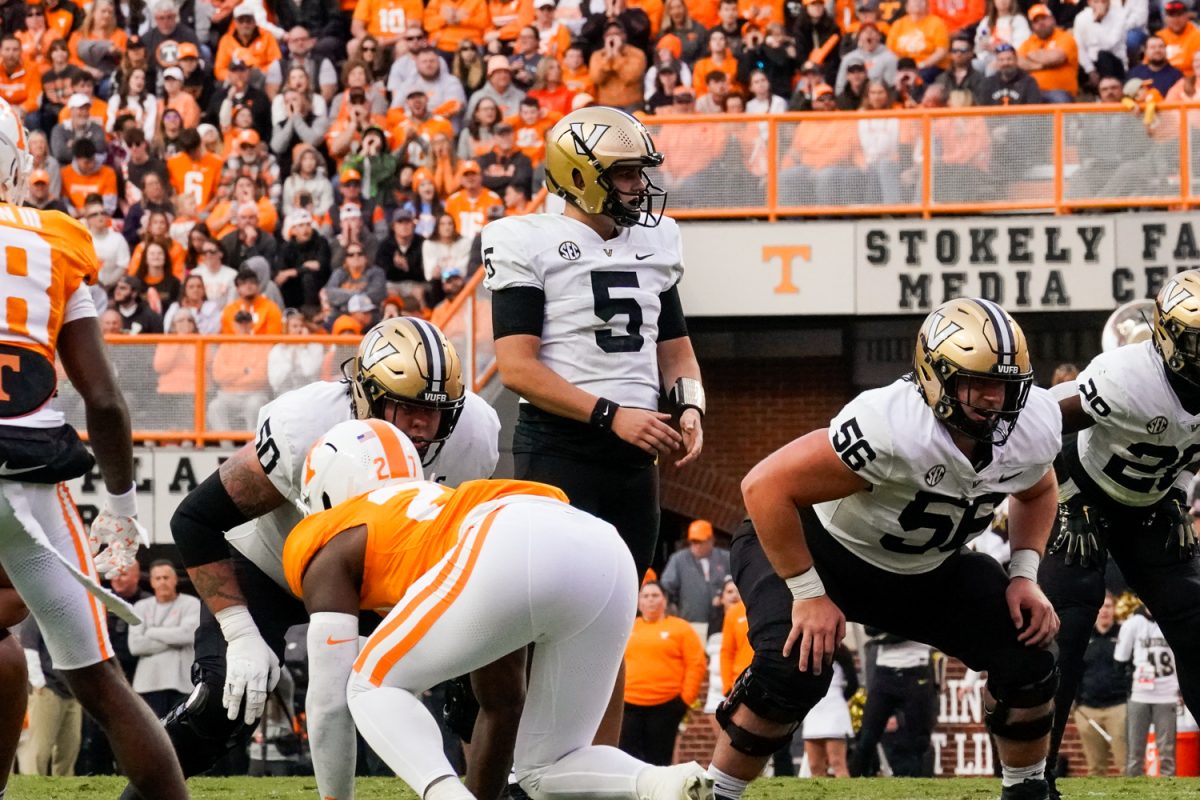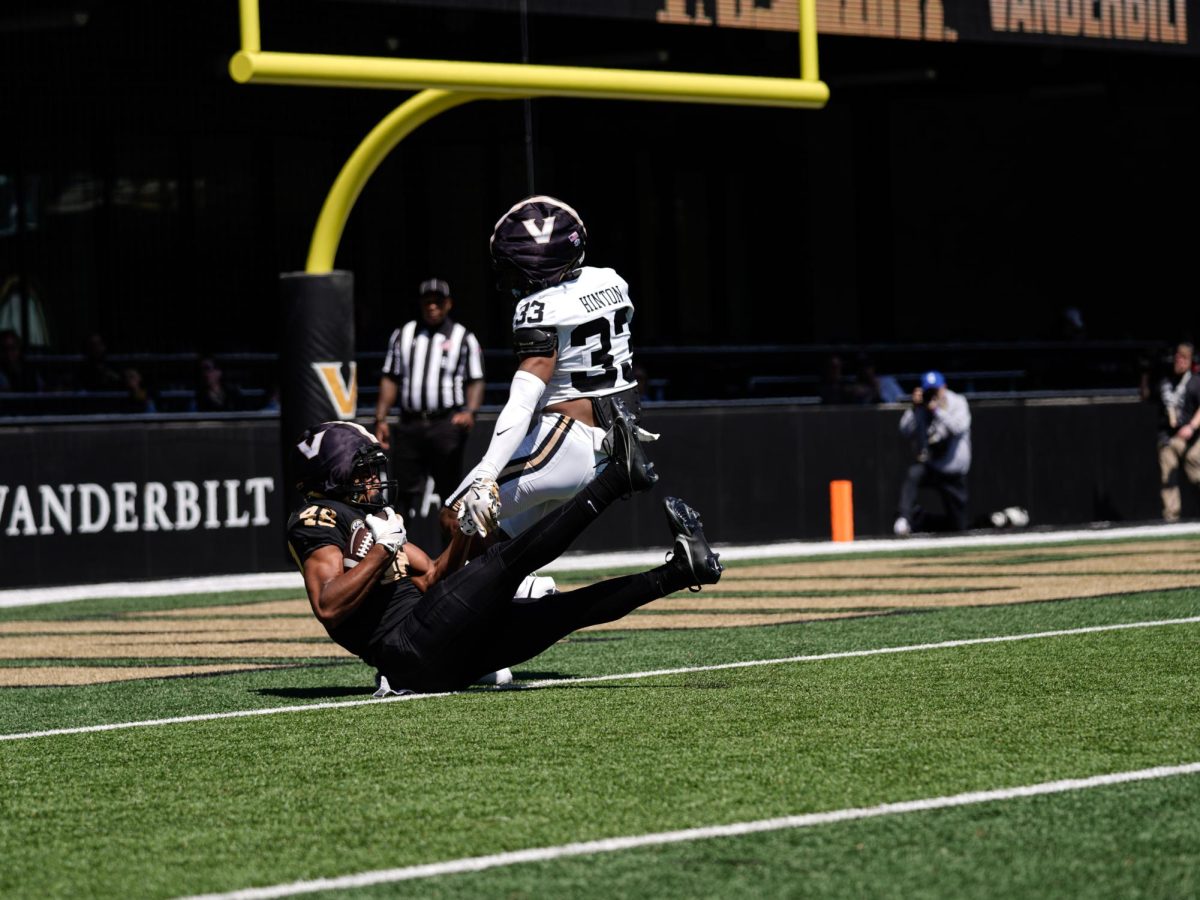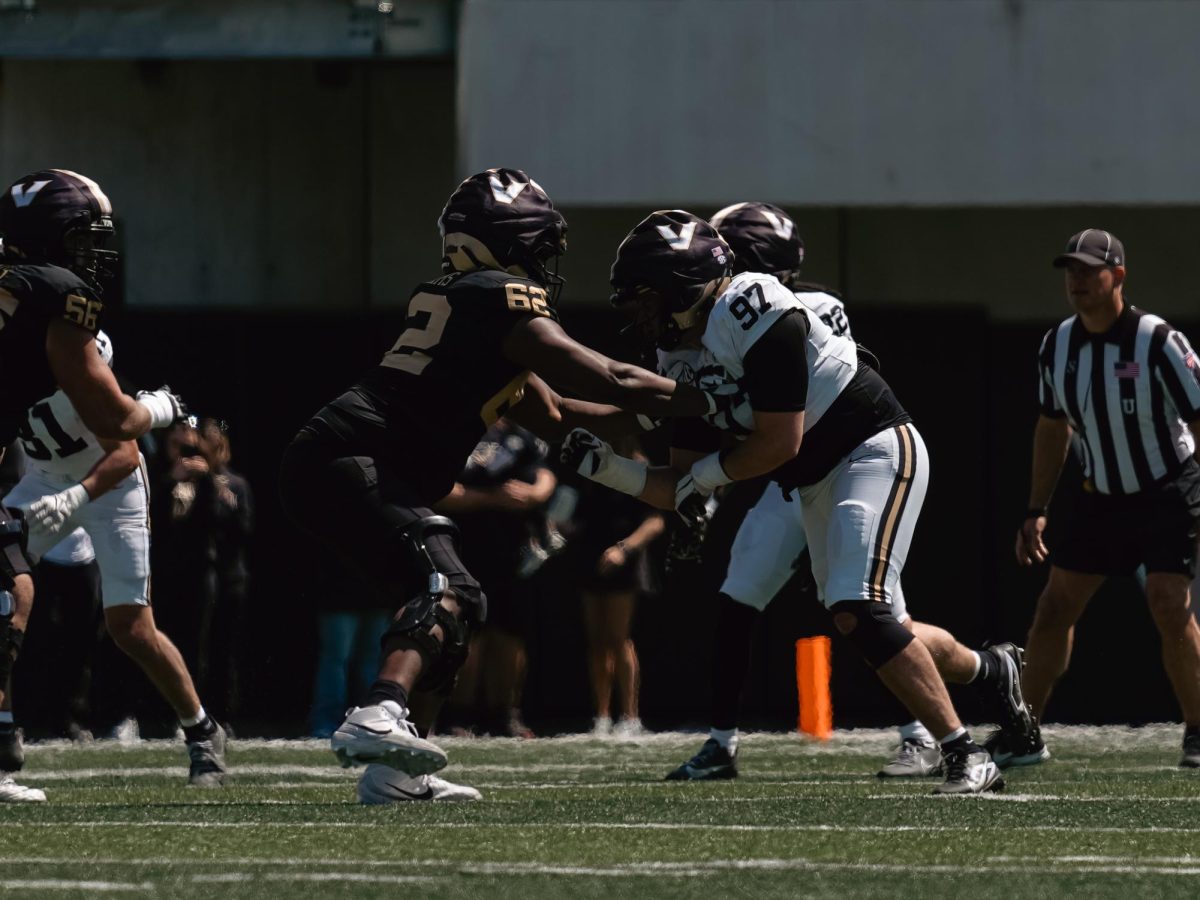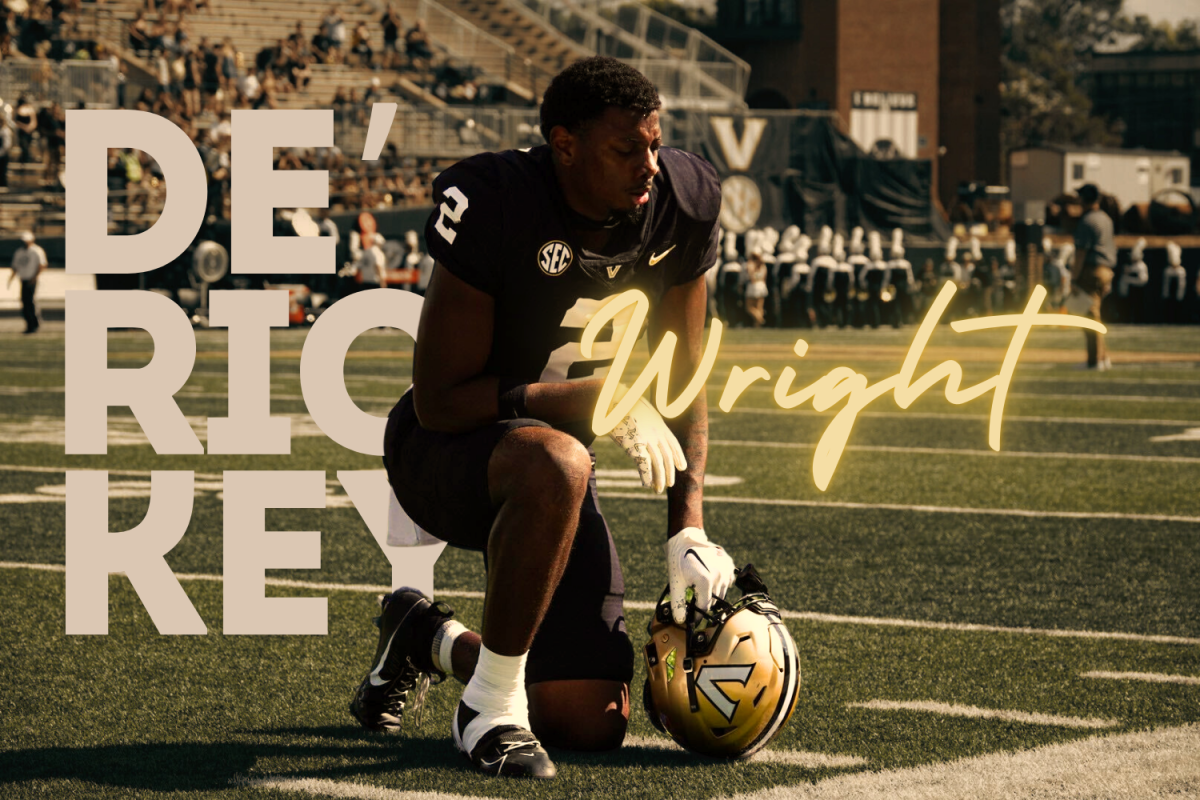There were plenty of reasons to celebrate when the Vanderbilt Commodores started the 2022 season with a 2-0 record. After all, it was the program’s first time winning two consecutive games to start the year since Clark Lea took over — and the team did so in dominant fashion. This year, despite matching that flawless record through two games, the enthusiasm seems to be wearing off. In between flashes of great football, Vanderbilt’s performance in wins against Hawaii and Alabama A&M left much to be desired by Commodore fans. Such is the price of high expectations.
Against Hawaii in Week One, Vanderbilt was expected to replicate its beatdown of the Rainbow Warriors in Honolulu last year. That didn’t happen. The Commodores were two De’Rickey Wright interceptions away from losing at home as 21-point favorites. The run game that generated 404 yards in 2022 was held to a docile 39 in 2023 (so much for that Week Zero film room prediction). The secondary was shredded by a passing offense that ranked near the bottom of college football in 2022. Still, Vanderbilt’s passing offense looked sharp, and the Commodores controlled the game until the fourth quarter.
Vanderbilt’s Week Two win against Alabama A&M was a much more promising showing. Things got off to a bleak start with a 12-point first half, but the Commodores put up 35 points in the second half and dominated the way they should against FCS competition. AJ Swann looked shaky at times, but the run game bounced back in a big way with 215 yards and an average of 6.3 yards per carry. After the game, head coach Clark Lea spoke on the offensive improvement the team displayed in the second half.
“Offensively, there were some great flashes, but we still lack consistency there,” Lea said. “We need to see more efficiency on first and second down to get the sticks moving.”
Lea better hope the Commodores have found an offensive formula they can replicate, as they face by far their toughest matchup so far in Wake Forest this week. Last season, the Commodores hot start came to a disastrous halt with a 42-15 defeat to Wake Forest at home. The Commodores were no match for Wake Forest’s notorious “slow mesh” offense, a bewildering RPO-based scheme that makes the Demon Deacons a nightmare for opposing defenses. Whereas the average RPO is a split-second decision, Wake Forest’s offense delays that process to force the defense to prematurely guess if the play will be a run or pass. The result has been one of the most prolific offenses in all of college football.
Fortunately for the Commodores, Wake Forest’s offense is missing a crucial element from last year’s blowout: quarterback Sam Hartman. He put up Heisman-worthy numbers with the slow mesh, averaging 305 passing yards and 3 touchdowns per game in his junior and senior seasons. Sophomore Mitch Griffis has replaced Hartman and has looked like a worthy successor so far. Griffis threw for 329 yards and 3 touchdowns as the Demon Deacons defeated Elon 37-17 in their Week One matchup. Did Wake Forest already find its next All-ACC quarterback, or is the slow mesh so effective that anyone can run the offense? Let’s find out.
Return of the mesh
If Wake Forest’s Week One win against Elon showed us anything, it’s that the offense didn’t skip a beat after transitioning from Hartman to Griffis at quarterback during the offseason. The slow mesh was already causing problems for the Phoenix on the very first drive of the game. On 2nd-and-7 in the red zone, Elon incorrectly read the RPO as a run, leading to an all-time wide open touchdown for the Demon Deacons. On the next selected play, the Elon linebacker covering tight end Cameron Hite hesitates when it appears the running back might take the snap. This split-second mistake gives Hite the extra step to beat his defender for a 69-yard touchdown.
The slow mesh system also complements Griffis’s abilities as a rusher, which Lea mentioned in his press conference Tuesday. While not a freak athlete, Griffis has sneaky speed that will be especially dangerous with Vanderbilt’s secondary keyed in on the play-action pass.
However, he has some deficiencies in his game that revealed themselves last week. Griffis is only 5’11”, which makes it difficult to see over his offensive line and read defenses. He was sacked four times by Elon, a startlingly high figure given the level of competition. He also threw a costly pick six on a slow mesh play where he couldn’t see a defender lurking behind the line of scrimmage. Vanderbilt, with its plethora of 6’5”+ defensive linemen, could pose serious problems if it’s able to disrupt Griffis’s vision at the line of scrimmage. The Commodores will need their front seven to deliver with the way the secondary has played to start the year.
Secondary problems
Vanderbilt’s secondary was unable to consistently contain two very mediocre offenses in Hawaii and Alabama A&M. With a 19-3 lead early in the third quarter, Vanderbilt had a chance to effectively end the game with a stop against the Alabama A&M Bulldogs. Instead, the secondary gave up a 62-yard touchdown on a play where Jayden Mahoney seemingly missed his assignment on the sideline. In addition to this inexcusable play, the secondary gave up two 40-yard passes to Hawaii.
Now, they face an offense that ranked first in passing touchdowns and ninth in passing yards in all of college football in 2022. Vanderbilt will almost certainly give up a few big plays to Wake Forest, but it won’t prevent them from winning the game. What could cost them the game are the mental lapses and momentum-killing mistakes that show up in the film against Hawaii and Alabama A&M.
Mahoney, BJ Anderson and Tyson Russell are all veteran defensive backs who need to step up if Vanderbilt hopes to stand a chance against Wake Forest. The Commodores will likely need an interception or two from turnover machine Wright, who picked off two passes against Hawaii but missed most of the Alabama A&M game with a lower body injury.
Special teams
Having played inconsistent football on both offense and defense to start the season, it’s fair to wonder what has powered Vanderbilt’s successful start to the season. The answer lies in the often underrated “third phase” of the game: special teams. Punter Matthew Hayball is averaging 53.4 yards per game, good for the fifth highest mark in college football. All-purpose beast Jayden McGowan is averaging 47.7 yards per kick return and was an ankle tackle away from having two return touchdowns already. The Commodores blocked two punts against Alabama A&M, with one of them bouncing through the back of the endzone for a safety. If the Commodores can consistently win the special teams battle against Wake Forest, the field position benefits might just keep them alive even if the offense comes out slow.
Sedrick Alexander
The ability to generate consistent positive yardage on the ground will be critical for Vanderbilt to quickly find an offensive rhythm against Wake Forest. While the rushing offense struggled against Hawaii, true freshman Sedrick Alexander made a strong case for the title of lead back with his performance against Alabama A&M. Alexander was virtually impossible to tackle in the second half, displaying incredible balance and explosiveness on two consecutive red-zone touchdowns. He also cleanly hurdled a Bulldog defender in the coolest offensive play of the season so far for the Commodores. The young running back will likely have a chance to snatch up first-string responsibilities away from Patrick Smith with another strong performance against Wake Forest.
The Commodores know the formula to beat Wake Forest: contain the slow mesh, win the battle on special teams and run the ball with consistency. Whether or not they can execute is an entirely different story. If Vanderbilt can avenge its defeat to Wake Forest last season, it will be a clear sign that the program is making strides in the right direction.
Vanderbilt will journey to Winston-Salem, N.C., to take on Wake Forest on Saturday, Sept. 9 at 10 a.m. CDT.

